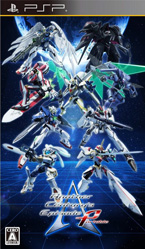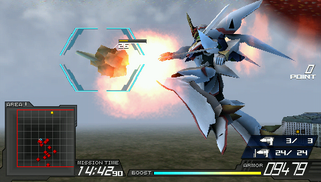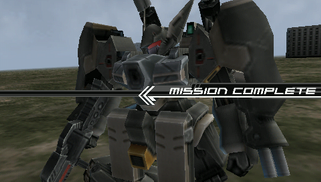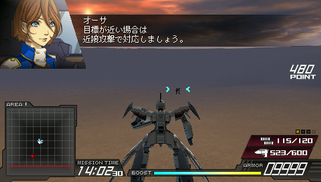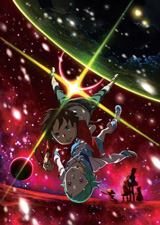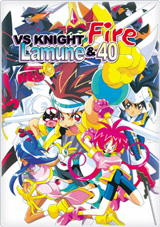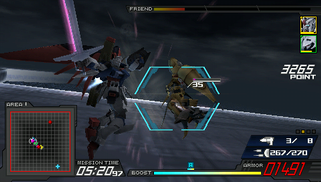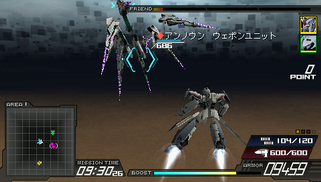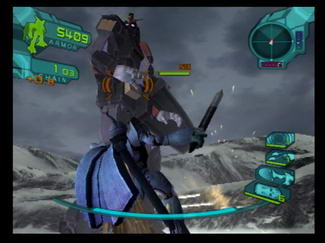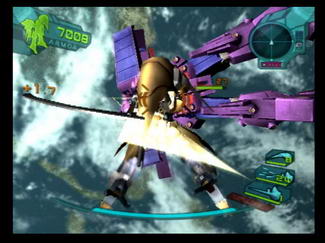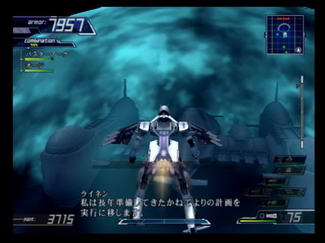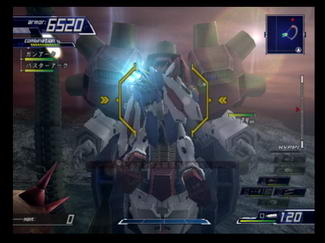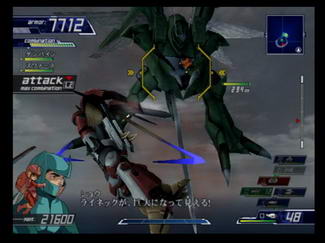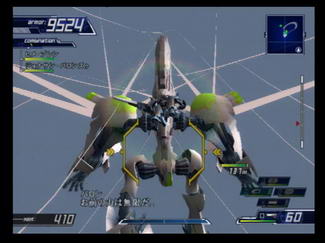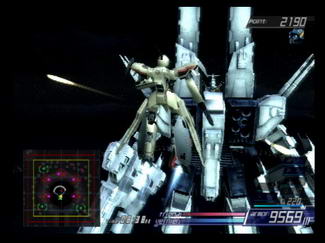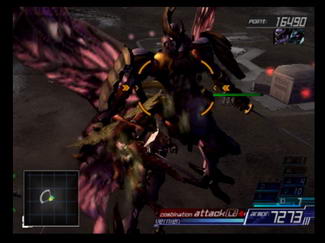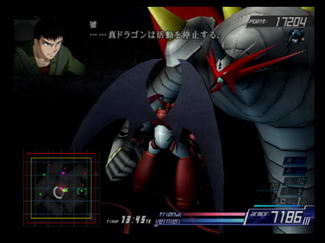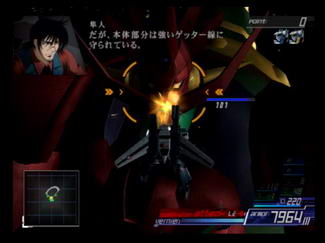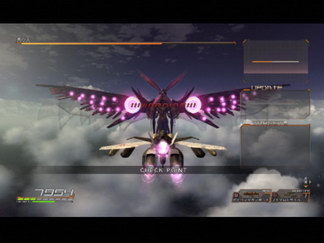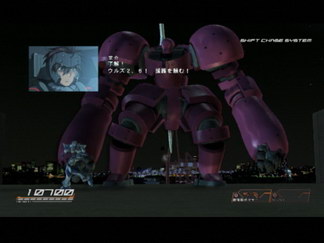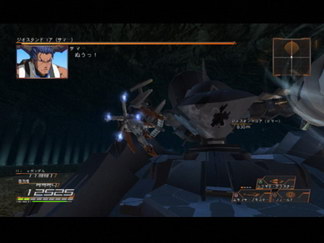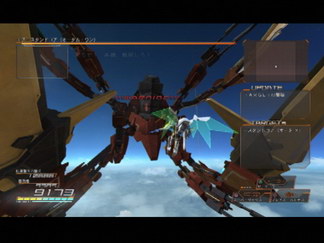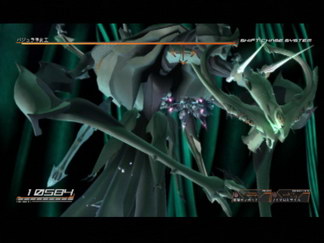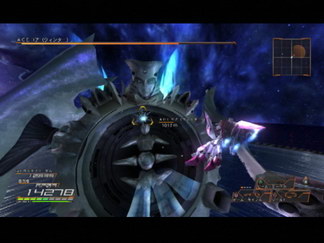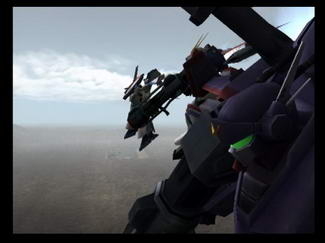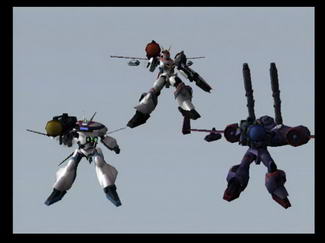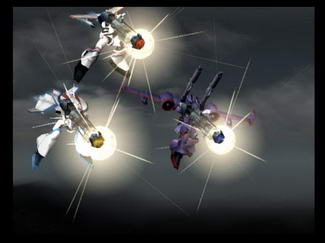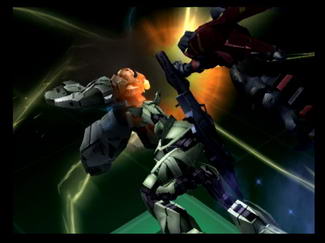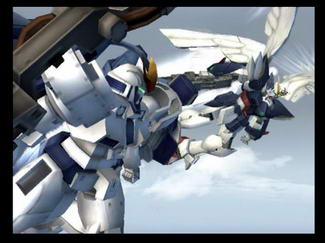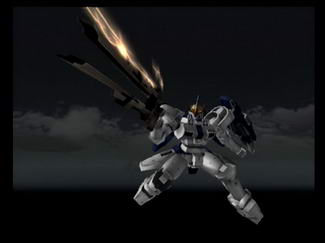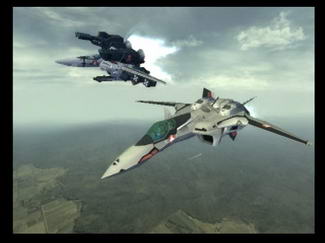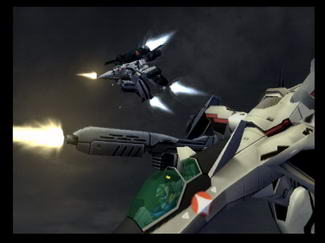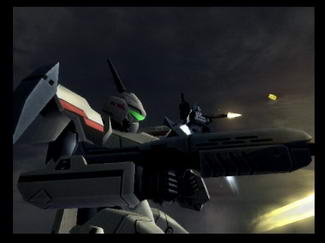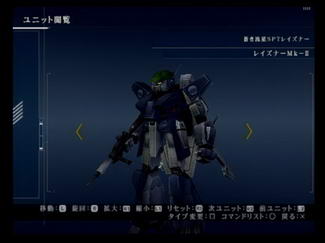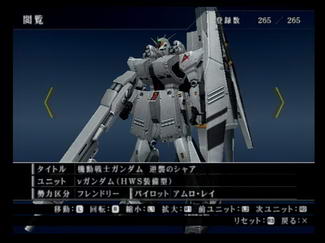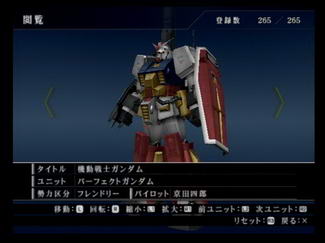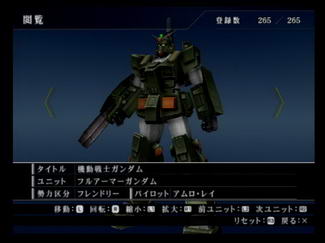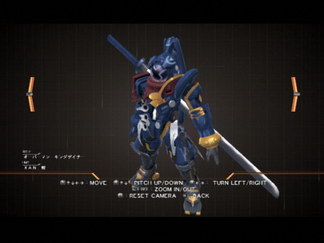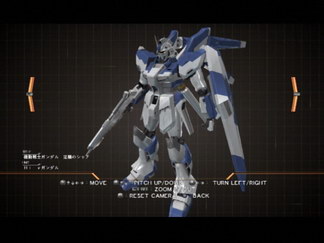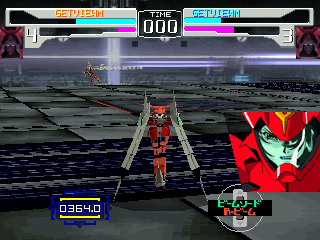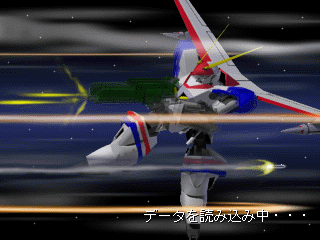
|
Next Page >>> |
|
Page 1: |
Page 2: |
Page 3: |
Page 4: |
Page 5: |
|
|
|
|
Roughly two months after ACER's release, Another Century's Episode Portable was announced for the PSP. It combines series from the last four games with three new entries and gameplay closer to that of the PS2 games than ACER. There is no plot however, so the game is more like a mission simulator than a connected series of events.
Quick Info:
|
Developer: |
|
|
Publisher: |
|
|
Genre: |
|
|
Themes: |
Another Century's Episode Portable
Mobile Suit Gundam 00
Plot Summary:
In the eleventh incarnation of the long running Gundam franchise, the world has switched to relying on solar power and gave rise to three global powers who control the orbital elevators supporting the solar energy collectors. Former fossil fuel-rich countries are reduced to fighting amongst themselves for resources, causing private military organization Celestial Being to emerge and stage armed interventions using powerful Gundam mobile suits.
Mecha:
Gundam Exia is a close combat-focused mobile suit with an arsenal of seven blades, while its successor the 00 Raiser adds more long range attacks and powerful energy blasts for extra versatility. Both units can make use of the Trans-Am system which temporarily boosts their abilities.
Psalm of Planets Eureka Seven: Good Night, Sleep Tight, Young Lovers
Plot Summary:
In this alternate setting to the TV series, Renton is a young military pilot fighting against alien invaders known as the Image. His goal is to rescue his childhood friend Eureka who was kidnapped eight years ago due to her strange origins.
Mecha:
The Nirvash typeZERO controls similarly to its TV incarnation from ACE3 along with the added ability of firing multi-lock laser beams.
VS Knight Lamune & 40 Fire
Plot Summary:
Young Lamunedo is approached by two mysterious girls who offer him a game disc. Upon beating the game, they reveal themselves as priestesses from another world tasked with finding the legendary hero Lamuness. The priestesses' world is under attack by an evil magician who seeks to resurrect a powerful demon god and only Lamuness can stop him.
Mecha:
Kaiser Fire is a magically-powered mech equipped with a sword and a variety of flame-based attacks.
ACEP mixes elements from both the PS2 games and ACER. The old functional boost setup returns and gives you the ability to perform ACER-style boosting by holding the button instead of tapping it. Unfortunately, boosting here is very weak and has practically no tolerance for damage because an enemy can fire a shot completely perpendicular to your flight path that will not only hit you but stop you dead in your tracks as well. Valkyries can once again fly in battroid mode, and the craptastic rhythm-tapping for your main weapon is gone. The lack of buttons on the PSP relegates the transformation, targeting and weapon change functions to the directional pad, and necessitates the return of ACER's weapon panels.
While the tension gauge does not make a return, your weapons' ammo no longer reloads. Instead there are resupply points sporadically placed in each mission that restore your ammo and hit points when you land right next to them. However, they cannot be used indefinitely and are often guarded by enemies that need to be taken out before being usable.
Custom soundtracks are back, but the setup is a bit obtuse. It involves dropping the MP3 files into predefined folders on the memory stick that correspond to specific instances in the game. There's an in-game menu detailing which instance plays which track but without knowledge of Japanese you're stuck fumbling in the dark.
The mission structure departs from the series norm and takes after the PSP Gundam games. Each mission is generally divided into two or more areas separated by small portals at the edge of the map. Depending on the mission, your path through these areas is either linear or requires going back and forth between them. There's a set time limit to finish each mission, and running out of hit points returns you to the fray with a fraction of your health and one minute deducted from your remaining time. The damaging energy fields from ACE3 come back along with new jamming devices that block your radar until you destroy them.
The combination attack gauge returns with some differences. Filling up in three segments, it gives you the option of either summoning your wingmen for a powerful attack or activating a bullet time effect that allows your squad to pile up cumulative damage on the target that only registers once the gauge runs out.
Also new in ACEP is the custom action system. Finishing missions and killing powerful enemy grunts rewards you with chips. These chips can be used to develop new abilities that can be equipped to any mech using the customizable weapon panels. These abilities range from different attacks to armor/ammo restoratives and status boosts.
The final addition is full cooperative multiplayer over ad hoc where you and two other players can tackle any of the missions as a single squad. Unfortunately there weren't any other people to test it around with.
While these new additions would fundamentally make for a solid game, ACEP suffers from the restrictions and development practices of the PSP. For starters, there's no attack power stat to upgrade on your mechs, which leaves custom actions as your sole means of becoming stronger and dealing more than peashooter damage to later enemies and bosses. Problem is, there are dozens of different chip types and coming by them requires copious amounts of grinding, as is mandated by the mentality of needing to pad out PSP games with repetitive busywork. This also slinks its way into the requirements for unlocking new mechs, which brings back the secret objectives from the PS2 game. Whereas those had only one secret objective per mission, a single missions in ACEP can have anywhere between twenty to thirty secret objectives. The amount of effort it would take to unlock one or two mechs in ACEP would have unlocked the entire playable roster of the previous games. Furthermore, the lack of a narrative to string the missions together leaves much of the game a soulless experience, illustrated by the boss fights against giant polygonal entities that start out fun and challenging but soon grow plodding and repetitive.
Bosses Galore
The most consistently excellent point about the ACE series is that the bosses always keep you on your toes, whether they're similarly-sized but very strong mechs (most of which become unlockable later), oversized monstrosities or screen filling battleships. They're always a challenge and a visual treat. Here are some of them:
Combination Attacks
There's just so much to like about this series for mecha fans. On top of being games based on multiple licensed properties that don't suck, there aren't many other games (if any at all) where you can play with some of the series' mecha in a fully 3D environment. A couple of the playable mechs don't even exist outside of design sketches that never made it into animated form, in addition to the original mecha designed by industry veterans.
Back in the '90s, Banpresto tried to expand the crossover mecha license into other genres using in-house resources. The results were like silent farts. N64 owners got a clunky fighting game called Super Robot Spirits, while PSX owners got something akin to the ACE series' prototype: A 3D action game called Real Robots Final Attack. To be fair, RRFA is a very blatant Virtual-On clone whose only distinguishing feature is having different attacks depending on what d-pad direction is held instead of what action is being performed. There's also a multi-stock bar that can be filled up to allow access to super moves, as well as a separate button for melee attacks. By this time developers were starting to push the graphical limits of the Playstation with stuff like Gran Turismo and Metal Gear Solid, and by that standard, the graphics in this game are an ugly blocky mess, to say nothing of the pitiful collision detection. All but one of the anime series here appeared in ACE at one point or another, and Super Robot Wars fans get treated to the popular SRX team mechs as playable bosses.
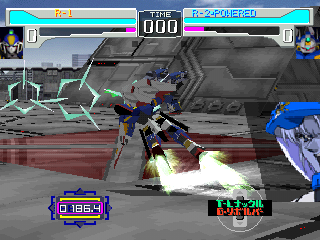
Real Robots Final Attack
Related Articles
|
Next Page >>> |
|
Page 1: |
Page 2: |
Page 3: |
Page 4: |
Page 5: |
|
|
|
|
